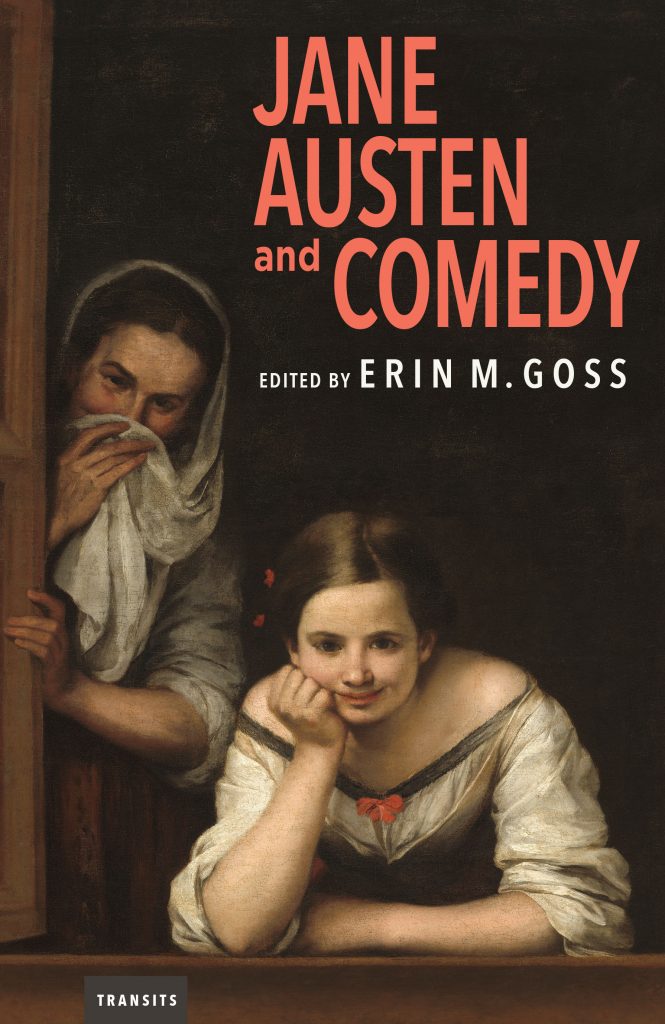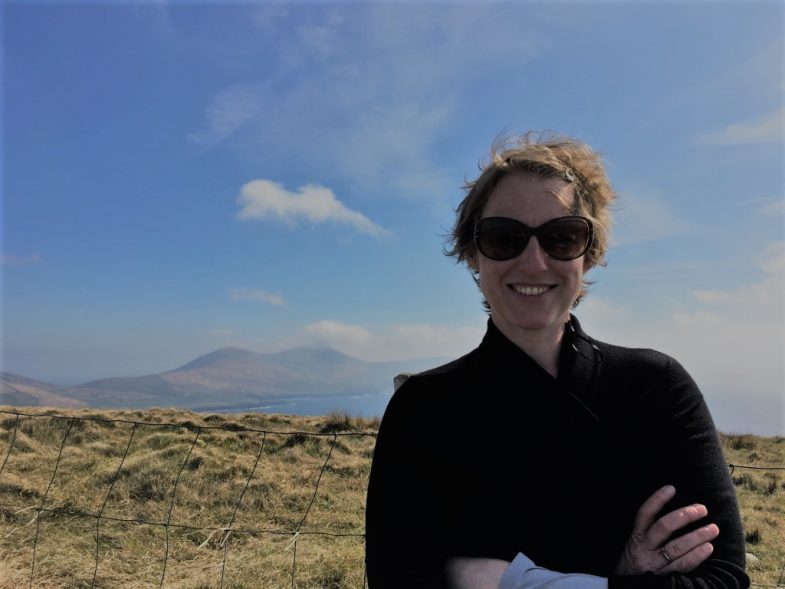
On the occasion of University Press Week 2019, Erin M. Goss, editor of the contributed volume Jane Austen and Comedy, spoke to us about the evergreen appeal of Austen’s work and her purposeful use of comedy therein. She is interviewed here by Samek Museum Fellow and Bucknell University Press editorial assistant Emily Owen.
Jane Austen’s work has remained a part of popular culture for so many years. Why do you think that is?
Because it charms on so very many levels – even on the level of the pedantic English professor (that’s me!) who resists being charmed by it. Austen somehow manages to give just about everybody what they want.
Why did you decide to edit a volume specifically about comedy in Jane Austen?
The short answer is that I’ve been teaching a course on Jane Austen and Comedy for several years now and have learned a lot from it about ways to think about comedy and humor, as well as about the kinds of assumptions that people bring to thinking about them. A longer answer is that I started teaching that course in the first place because I came to an appreciation for Jane Austen rather late in life for such a thing, and I came to it specifically through a recognition of her humor and laughter. One of the trickiest things to teach and to talk about, I find, is tone, and Jane Austen’s tone is both masterful and the very core of her comedy. When I realized that she made me laugh a lot I found myself finally wanting to give her my time.
An even longer answer is that one of the things that has long drawn me to comedy and to laughter is my own training (one might say conditioning) in what is too often legible as the despair of high theory. I want to find in laughter and comedy a version of thinking that does not rely on tropes of tragedy (the always-already dead subject, etc.) but that still retains the kind of rigor and intensity that drew me into theoretical discourses in the first place. This is maybe summed up best for me by a non-academic writer, Rebecca Solnit, who I quote in the book, when she writes in Hope in the Dark (2004) that tragedy is “seductive” and may well make “the greatest art,” but that it is comedy that allows for survival. Tragedy is sublime, but “Survival is funny.” She’s talking about something different from literary history and critical theory because she’s thinking about the history of leftist political activism rather than the twists and turns of academic discourse, and I guess when I think about comedy and laughter ultimately I am too.
What is something about Jane Austen and her writing that readers can expect to learn from this collection?
Austen’s comedy is multi-faceted, which shouldn’t surprise anyone, of course. But those facets come together as a form of not just entertainment but of thinking. I think Austen thought a great deal about what it meant to laugh, and to make others laugh. Both of these are especially tricky propositions for women, both then and now, when we continue to have absurd debates about whether or not women can be funny at all. I hope that a reader of the book might find new ways to think about the ways that comedy and laughter and humor might matter more than we had previously thought.
What surprised you the most while working on this project? Did you learn anything new?
Maybe just that it’s quite hard to say anything definitive on comedy and laughter. Even those two terms are so distinct from one another and in some respects not even necessarily related. I started the project with a deep investment to honoring laughter but also to reflecting on a generic or traditional form of comedy, with all its commitments to wish-fulfillment and happy endings. Coming to a clear and definitive position, though, on what those two things necessarily have to do with one another has proven harder than I anticipated. I am so grateful to the contributors to the volume, who certainly helped me think through that question. It’s one to which I will continue to return.
What is your personal favorite Jane Austen story?
Emma, easily. I’ve gained a great appreciation for Northanger Abbey over the years of teaching it, especially as I’ve seen it flummox and sometimes even anger my students. That response has helped me understand some of the apparent weaknesses of the novel (which many call her worst, and so on), but it has also helped me see what it looks like when she hasn’t yet perhaps learned (or decided) to entirely conceal her bite. Emma is a masterpiece of biting without admitting it; Northanger Abbey perhaps reminds too much that the reader is also a subject for amusement.
Would you like to add any other comments?
I’m so grateful to Bucknell for the chance to work on this book. Thanks for the chance to keep thinking about it here, and happy University Press Week!

Erin M. Goss is associate professor of English at Clemson University, editor of Jane Austen and Comedy, and author of Revealing Bodies: Anatomy, Allegory, and the Grounds of Knowledge in the Long Eighteenth Century (both published by Bucknell University Press).